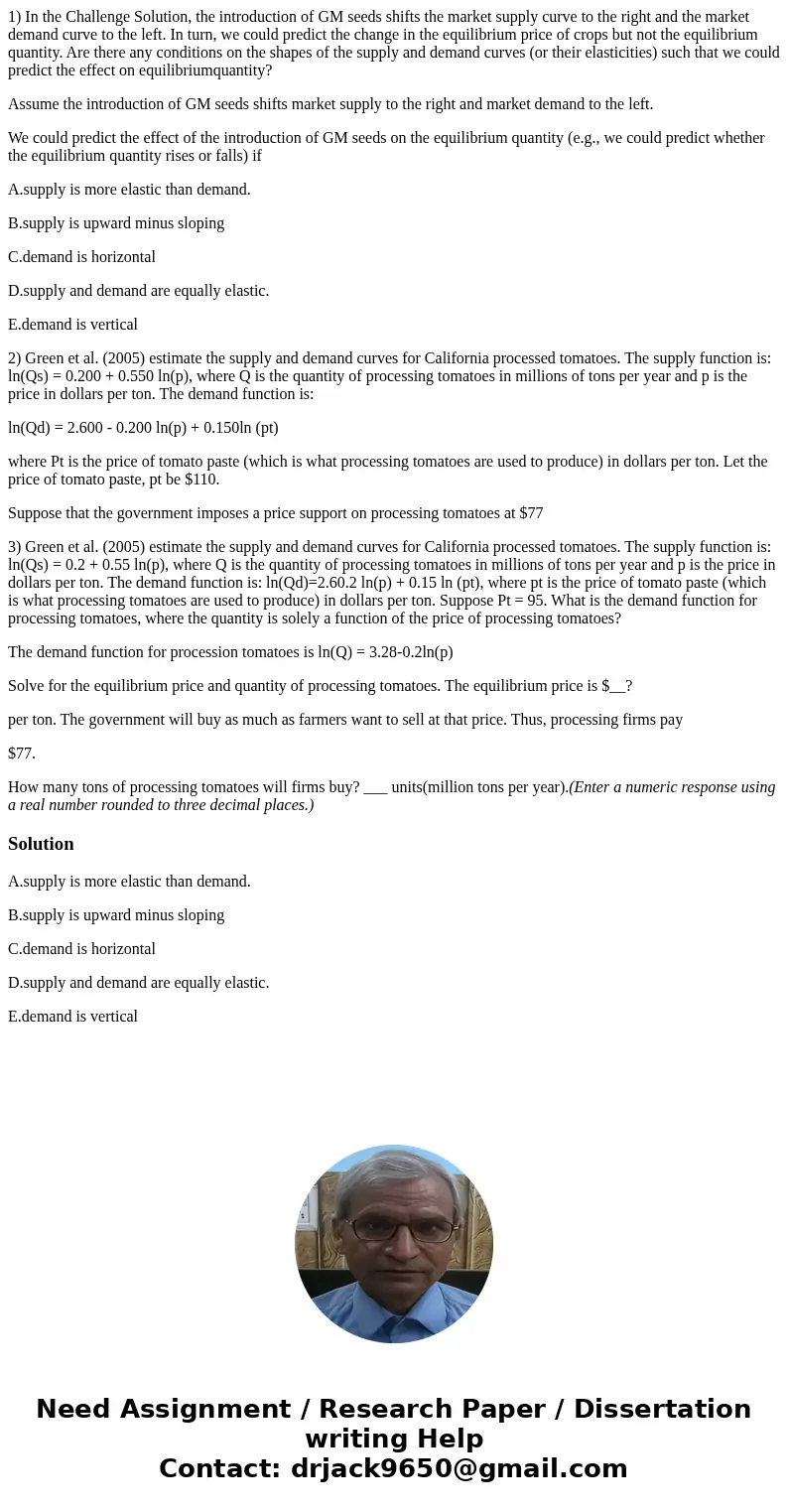1 In the Challenge Solution the introduction of GM seeds shi
1) In the Challenge Solution, the introduction of GM seeds shifts the market supply curve to the right and the market demand curve to the left. In turn, we could predict the change in the equilibrium price of crops but not the equilibrium quantity. Are there any conditions on the shapes of the supply and demand curves (or their elasticities) such that we could predict the effect on equilibriumquantity?
Assume the introduction of GM seeds shifts market supply to the right and market demand to the left.
We could predict the effect of the introduction of GM seeds on the equilibrium quantity (e.g., we could predict whether the equilibrium quantity rises or falls) if
A.supply is more elastic than demand.
B.supply is upward minus sloping
C.demand is horizontal
D.supply and demand are equally elastic.
E.demand is vertical
2) Green et al. (2005) estimate the supply and demand curves for California processed tomatoes. The supply function is: ln(Qs) = 0.200 + 0.550 ln(p), where Q is the quantity of processing tomatoes in millions of tons per year and p is the price in dollars per ton. The demand function is:
ln(Qd) = 2.600 - 0.200 ln(p) + 0.150ln (pt)
where Pt is the price of tomato paste (which is what processing tomatoes are used to produce) in dollars per ton. Let the price of tomato paste, pt be $110.
Suppose that the government imposes a price support on processing tomatoes at $77
3) Green et al. (2005) estimate the supply and demand curves for California processed tomatoes. The supply function is: ln(Qs) = 0.2 + 0.55 ln(p), where Q is the quantity of processing tomatoes in millions of tons per year and p is the price in dollars per ton. The demand function is: ln(Qd)=2.60.2 ln(p) + 0.15 ln (pt), where pt is the price of tomato paste (which is what processing tomatoes are used to produce) in dollars per ton. Suppose Pt = 95. What is the demand function for processing tomatoes, where the quantity is solely a function of the price of processing tomatoes?
The demand function for procession tomatoes is ln(Q) = 3.28-0.2ln(p)
Solve for the equilibrium price and quantity of processing tomatoes. The equilibrium price is $__?
per ton. The government will buy as much as farmers want to sell at that price. Thus, processing firms pay
$77.
How many tons of processing tomatoes will firms buy? ___ units(million tons per year).(Enter a numeric response using a real number rounded to three decimal places.)
Solution
A.supply is more elastic than demand.
B.supply is upward minus sloping
C.demand is horizontal
D.supply and demand are equally elastic.
E.demand is vertical

 Homework Sourse
Homework Sourse